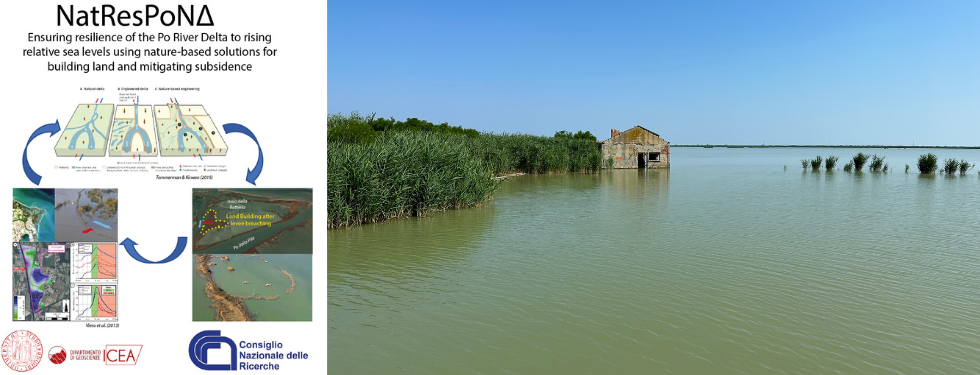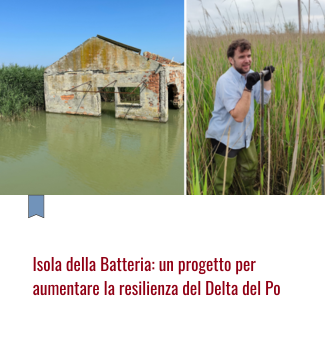Ensuring resilience of the Po River Delta to rising relative sea levels using nature-based solutions for building land and mitigating subsidence - NatResPoNΔ


Title: Ensuring resilience of the Po River Delta to rising relative sea levels using nature-based solutions for building land and mitigating subsidence - NatResPoNΔ
Principal Investigator: Alvise Finotello | Programme: PNRR DD 1409 del 14/09/2022
Total Contribution € 107.191,00 | Project Duration: 24 months

Continued increases in climate extremes, population growth, and human-induced subsidence pose a serious threat to the sustainability of many of the World's river deltas. It is becoming increasingly clear how hard engineering measures (e.g., dams, dikes, and levees) are unsustainable and likely to reduce deltaic ecosystems' resilience in the long run. Thus, a paradigm change in river-delta management plans is underway, from hard infrastructures to new approaches designed to "work with the river", leading to a broad interest in "nature-based" solutions to restore and re-create deltaic lands.
The proposed research project aims to test the feasibility of nature-based solutions to increase the resilience of the Po River Delta ultimately mitigating long-term flood and storm-surge risks and ensuring the sustainability of communities on the delta. Emphasis will be placed on quantifying the inherent ability of the delta system to create new land and contribute to the accretion of existing soils by depositing river-borne sediments, as testified by a newly emerged crevasse-splay system that has recently formed in a previously embanked area that was completely flooded due to soil subsidence. This goal will be achieved through a multidisciplinary approach involving sedimentological analyses, remote sensing, and numerical modeling. Through sedimentological and remote sensing analyses, the potential land-building rates will be estimated. The information gained from the field will be used to inform and calibrate an ad hoc hydro-morphodynamic numerical model. Once calibrated, the model will be applied to the entire PRD and used to test the feasibility of reducing PRD vulnerability by creating controlled sediment diversions and moving channel embankments to promote active sedimentation and counteract coupled soil subsidence and eustatic sea level rise.
The results will improve our knowledge of the resilience of natural systems and offer critical insights into future management strategies for the Po River delta and similar coastal areas. Essential ingredients of the projects, which are ensured by the expertise of the research units involved, are i) knowledge of key hydro-,morpho-, and sediment-dynamic processes acting in fluvio-deltaic coastal landscapes; ii) relevant data from field studies and measurements; and iii) numerical-modelling skills suited to investigate the dynamics of complex fluvio-deltaic systems. Dissemination activities will include the publication of scientific papers and attendance at international conferences. Importantly, the close cooperation with public authorities and agencies in charge of PRD management, environmental planning, and civil protection, will enhance the application potentialities and assure practical impacts of the project outcomes.
 |





